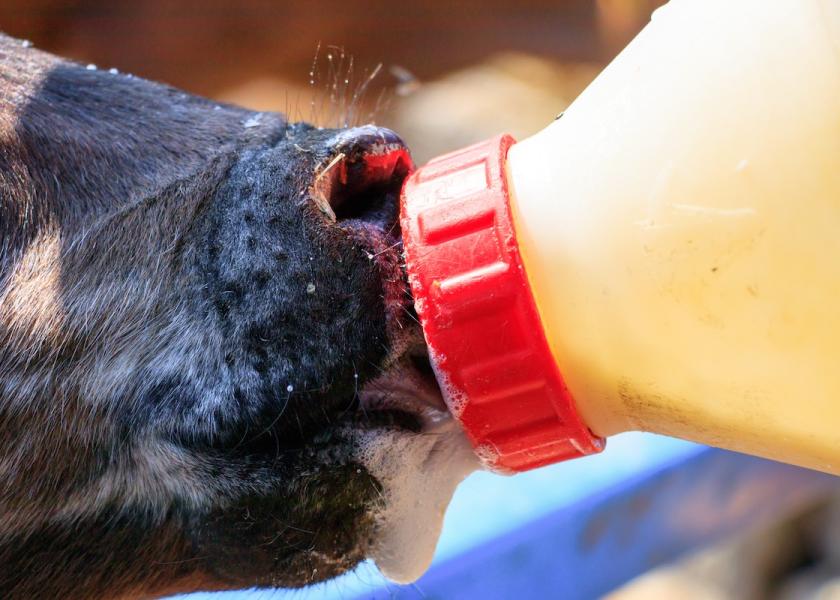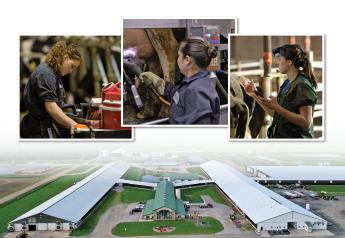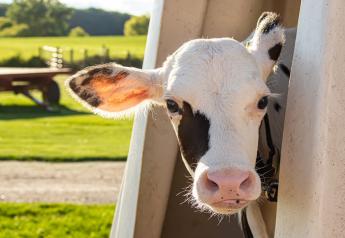Fat Sources: The New Focus in Milk Replacers

A lot of different formulation strategies can be employed in manufacturing milk replacer. But it takes more than just balancing for total protein and fat content to create a milk replacer recipe that optimizes calf performance.
A recent study published in the Journal of Dairy Science summarized a feeding trial by an international team of researchers who specifically examined and compared the results of using three different milk replacer formulations with different fat sources.
The study was led by PhD candidate Juliette Wilms with Netherlands-based Trouw Nutrition, with collaboration from researchers at the University of Guelph, Wageningen University in the Netherlands, and the University of Bonn, Germany.
Three feeding groups of 21 newborn Holstein calves were started on three respective milk replacer formulations. All three milk replacer sources contained 30% fat, 24% crude protein, and 36% lactose on a dry-matter basis. But three different combinations of 2 feedstuffs each were used to satisfy the fat portion:
- Vegetable – 80% rapeseed and 20% coconut oil;
- Animal – 65% lard and 35% liquid dairy cream; and
- Mixed – 80% lard and 20% coconut fat
All fat ingredients were spray-dried during the milk replacer production process.
In the preweaned period, calves were housed in pens of 9 calves each – 3 from each feeding group – with their respective liquid ration dispensed ad libitum through a single autofeeder. They had common access to free-choice starter feed, chopped straw, and water throughout the study. Weaning was gradually induced between 7 and 10 weeks of age.
Calves were weighed and blood collected weekly until 85 days after arrival. Drinking speed and visits to the milk replacer source were recorded by the autofeeder software. Health events were recorded by caretakers, who were not informed of individual calves’ assigned feeding groups.
Results included:
- No difference between groups in the number of calves receiving therapeutic intervention for diarrhea and respiratory disease;
- Calves fed the animal fat ration consumed a higher volume of milk replacer than the other two treatment groups.
- Starter feed intake did not vary significantly between groups.
- Preweaned metabolizable energy intake was higher in calves fed the animal fat ration than the other two groups.
- Plasma fatty acid profiles closely matched the fat source in the liquid ration in weeks 4 and 8, but that differentiation disappeared by week 12 when calves were completely weaned.
- The animal fat group had a significantly higher preweaning average daily gain (ADG) [915 g/day, or about 2.017 lb./day] compared to the other two groups, which averaged about 783 g/day, or 1.73 lb./day.
The researchers noted that animal fat treatment was developed to align closely with the fatty acid profile of milk. Including medium-chain fatty acids was an important objective, as these specific fatty acids are a rapidly available energy source that can influence satiety signaling in calves. Whole milk contains about 11% medium-chain fatty acids. The inclusion rate in this study was: vegetable ration – 22%; animal ration – 7%; and mixed ration – 12%.
They concluded the slower growth of calves in the vegetable fat group compared to the animal fat group was linked to a higher preweaning energy conversion ratio in the vegetable group (calculated by dividing the total daily metabolizable energy intake by ADG), indicating a lower feed efficiency.
Overall, the fatty acid profile of the mixed group was very similar to that of the animal group, except that the animal fat ration contained butyric and caproic acids. Previous studies have shown that supplementing calves with butyric acid has improved gastrointestinal tract development.
Finally, the researchers noted that the animal fat ration did not include 100% milk fat because that would defeat one of the main purposes of milk replacer, which is increasing the net dairy product yield of dairy farms. The study also did not take into account the cost difference between the rations, most notably the potentially higher cost of competing in the human food market for dairy cream/butterfat.
For more on Calf Health, read:







